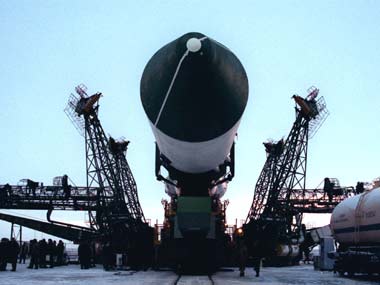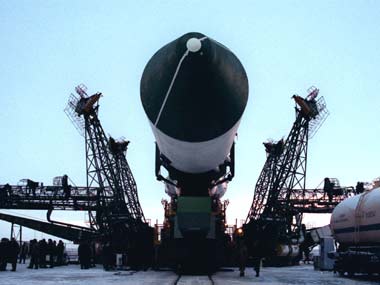Moscow: Meteor-1, the Soviet Union’s first fully operational weather satellite, will re-enter the Earth’s atmosphere after more than four decades in orbit, the web site of the US Strategic Command said. [caption id=“attachment_257390” align=“alignleft” width=“380” caption=“A Soviet Soyuz rocket bearing a satellite: Reuters”]
 [/caption]The Meteor satellite series was developed in the Soviet Union during the sixties. On March 26, 1969, a Vostok rocket launched Meteor-1, the very first version of the Soviet Meteor satellite network, into orbit. The satellite terminated operations in July 1970, according to NASA information. The spacecraft is expected to begin falling at 3:13 a.m. Moscow time on 27 March with debris estimated to fall into the Indian Ocean south of Sri Lanka, the US Strategic Command said. Weighing between 1,200 and 1,400 kg, the spacecraft was originally placed in orbit at an altitude of 650 km, the Space Safety magazine said. Two solar panels were automatically oriented toward the sun to provide the spacecraft with the maximum amount of solar power. Meteor-1 provided near-global observations of the earth’s weather systems, cloud cover, ice and snow fields, and reflected and emitted radiation from the dayside and nightside of the earth-atmosphere system for operational use by the Soviet meteorological service. Some of the processed data and TV pictures from the satellite were distributed to meteorological centers around the world. IANS
[/caption]The Meteor satellite series was developed in the Soviet Union during the sixties. On March 26, 1969, a Vostok rocket launched Meteor-1, the very first version of the Soviet Meteor satellite network, into orbit. The satellite terminated operations in July 1970, according to NASA information. The spacecraft is expected to begin falling at 3:13 a.m. Moscow time on 27 March with debris estimated to fall into the Indian Ocean south of Sri Lanka, the US Strategic Command said. Weighing between 1,200 and 1,400 kg, the spacecraft was originally placed in orbit at an altitude of 650 km, the Space Safety magazine said. Two solar panels were automatically oriented toward the sun to provide the spacecraft with the maximum amount of solar power. Meteor-1 provided near-global observations of the earth’s weather systems, cloud cover, ice and snow fields, and reflected and emitted radiation from the dayside and nightside of the earth-atmosphere system for operational use by the Soviet meteorological service. Some of the processed data and TV pictures from the satellite were distributed to meteorological centers around the world. IANS
Forty-year-old Soviet satellite to fall into Indian Ocean
FP Archives
• March 27, 2012, 17:28:23 IST
The spacecraft is expected to begin falling at 3:13 a.m. Moscow time on 27 March
Advertisement
)